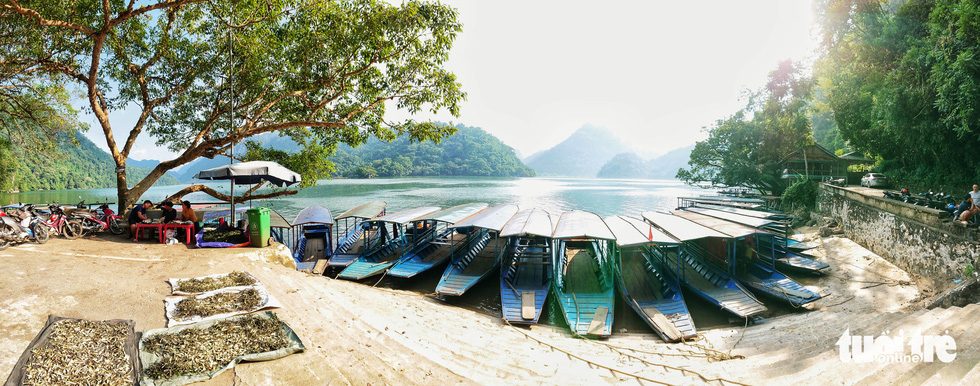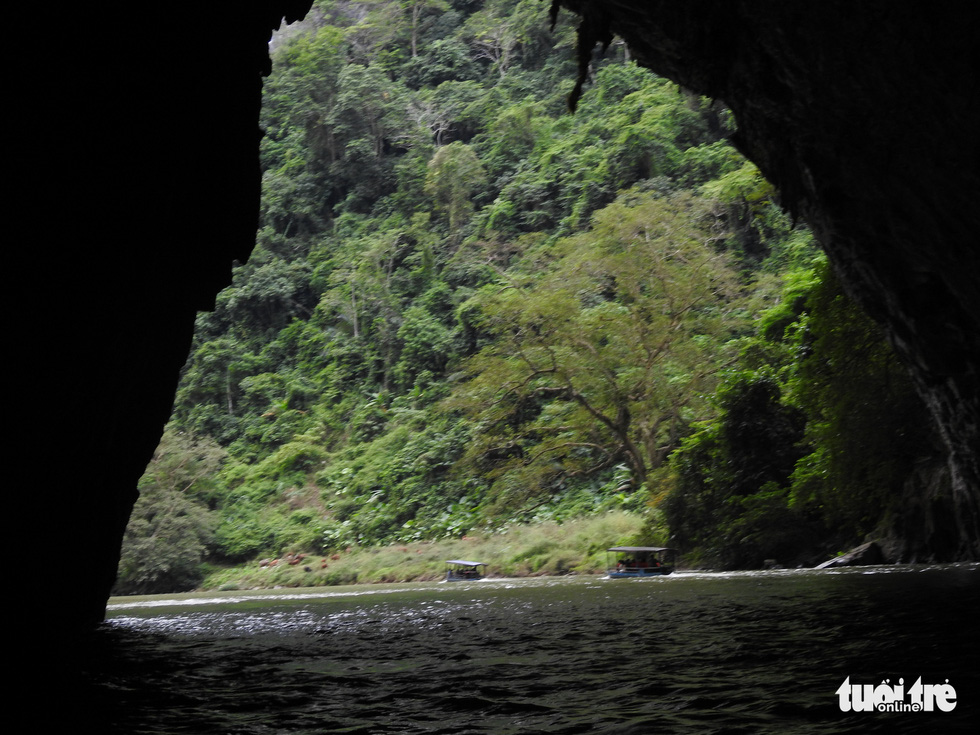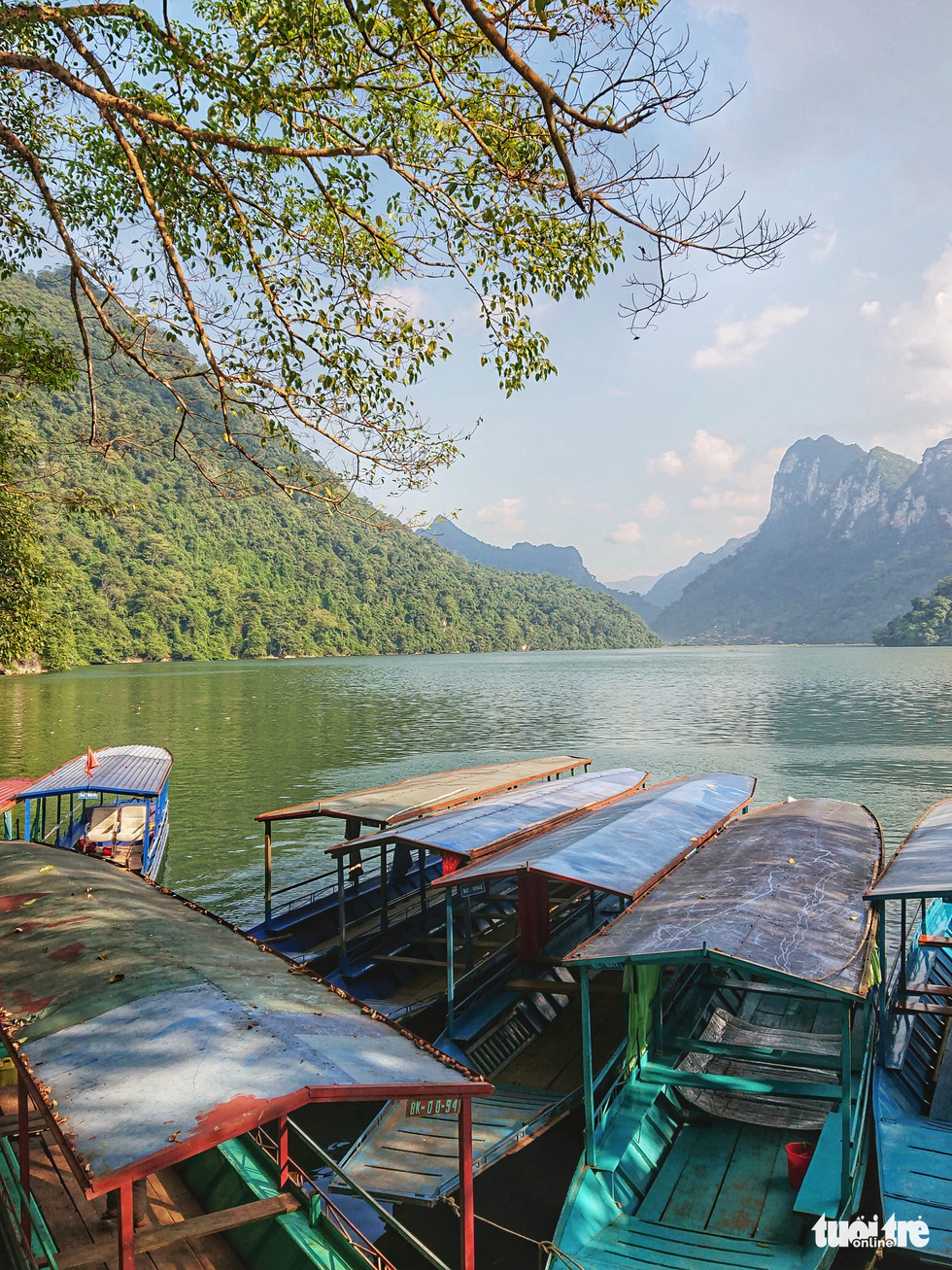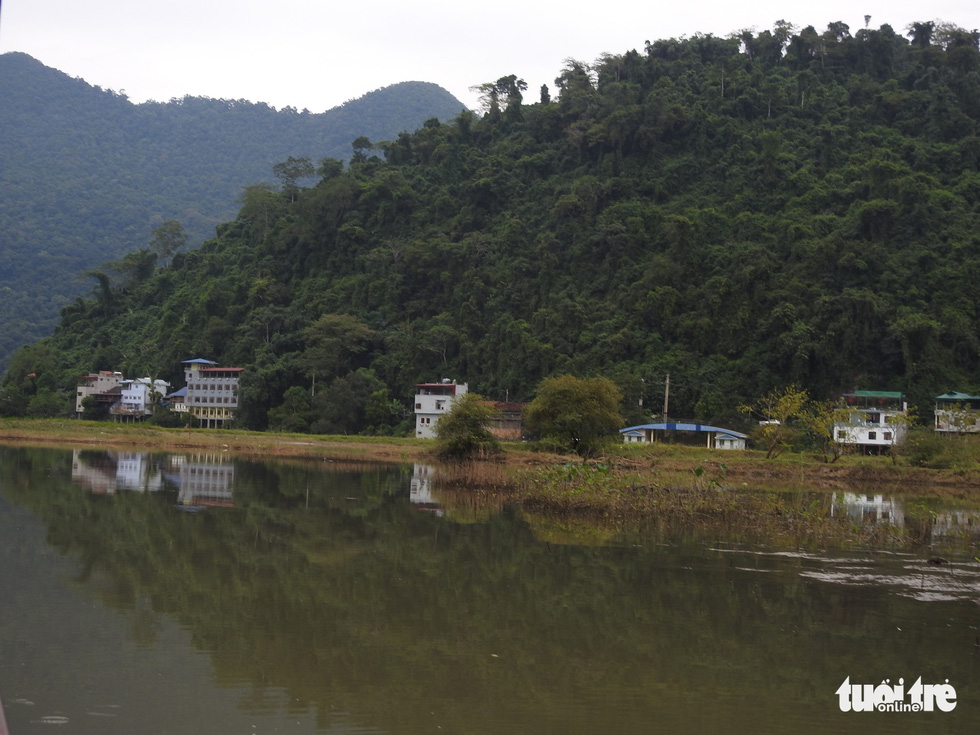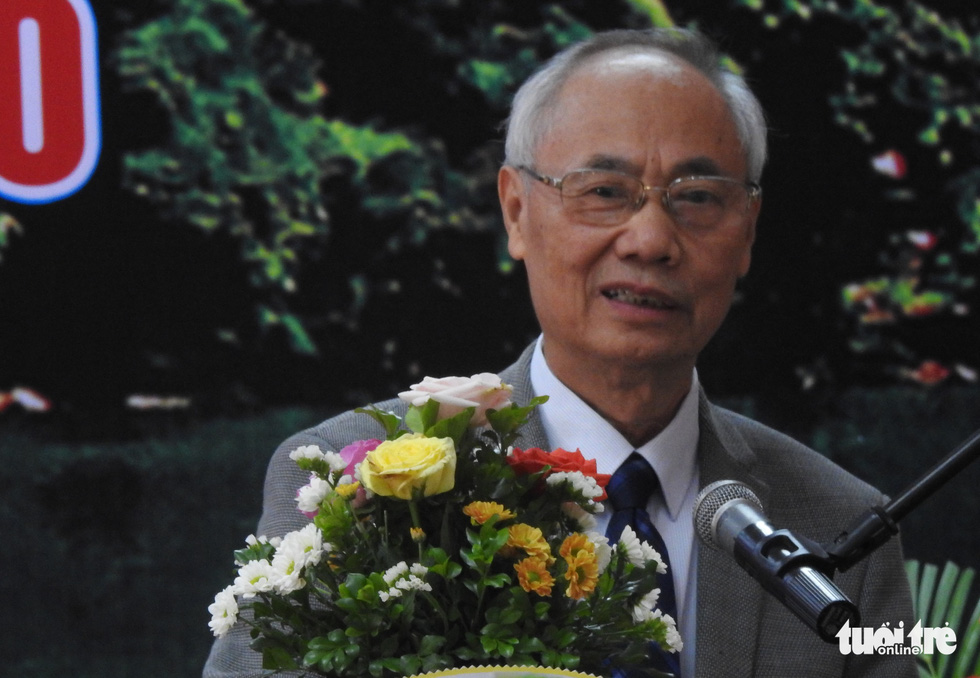As one of Vietnam’s least visited provinces, Bac Kan in the country’s mountainous north has preserved its stunning landscape and rich indigenous culture despite being situated a mere 200 kilometers from Hanoi.
Vietnam’s sleeping beauty
Nestled amongst the country’s northeastern mountain, Bac Kan Province is a midland territory endowed with natural beauty, cultural diversity, and dozens of historical sites dating back to Vietnam’s resistance against French colonizers.
Despite its beauty, the province has managed to keep itself off the well-trodden tourist trail.
According to Bac Kan authorities, the province welcomed just 500,000 tourists in 2019.
Though that number is an increase from years past, Vu The Binh, deputy director of the Vietnam Tourism Association, noted that Bac Kan’s tourist count is among the lowest in the country, amounting to just a sixth of the footfall at Bai Dinh Temple or the Trang An boat tour in nearby Ninh Binh Province.
|
|
| Boats travel through a cave in Bac Kan Province. Photo: T.Dieu / Tuoi Tre |
But despite the lack of popularity, Bac Kan has no less to offer than other northern counterparts.
Ba Be Lake, for example, has been recognized a special national site by the Ministry of Culture, Sports, and Tourism.
Surrounding Ba Be Lake is Ba Be National Park, which offers an extensive list of natural splendors, including Tien Lake, Ba Goa Island, Puong Cave, Dau Dang Waterfall, Tat Ma Waterfall, Nang Lake, Hua Ma Cave, Na Phoong Cave, Tham Kit Cave, and Tham Phay Cave.
The park of Bac Kan has been nominated as a future UNESCO World Heritage Site.
Bac Kan is also known for its vibrant palette of indigenous cultures.
The age-old practices of the Tay, Nung, and Dao are alive and strong in the region, particularly during the Long Tong Ba Be, Mu La Pac Nam Festivals and at the Xuan Duong Love Market.
Bac Kan also boasts a streak of national-level historical sites, which tell the story of the country’s resistance against foreign powers.
|
|
| Boats are docked at a pier on Ba Be Lake in Bac Kan Province. Photo: Nam Tran / Tuoi Tre |
Still, Bac Kan does not seem to be able to capitalize on its rich history and natural beauty.
“[Tourism] resources can’t just be sold without forethought. It requires a product development process, including tour design and advertising, which in turn call for a league of competent tourism personnel and executives,” Binh remarked.
“Bac Kan lacks these competencies and therefore isn’t able to get in on the tourism action.”
Comprehensive vision needed
Though its tourism shortcoming is well notable, there has been an improvement in transport infrastructure in the province over the last few years, including a surge of new lodging facilities capable of accommodating large tourist groups.
Local art troupes have been formed to cater to tourists’ penchant for local performance art.
|
|
| Unregulated buildings on the waterfront of Ba Be Lake in Bac Kan Province. Photo: T.Dieu / Tuoi Tre |
Nevertheless, the tourism boom has exposed the locale to a new array of problems, such as a lack of comprehensive construction planning, as highlighted by the congeries of homestay facilities on Ba Be Lake’s waterfront.
In a discussion on tourism investment in Bac Kan, Binh of the Vietnam Tourism Association shared that development requires investment, but it should be done the right way to ensure sustainability.
He referred to Sin Suoi Ho – a successful community tourism model in northern Lai Chau Province – and its prioritization of preserving nature while still attracting an impressive 50,000 tourists in 2019.
“Community tourism only works in landscapes which are well preserved. Without a suitable approach to construction and service planning, the model will collapse,” Binh warned.
|
|
| Vu The Binh, deputy director of the Vietnam Tourism Association, speaks at a conference. Photo: T.Dieu / Tuoi Tre |
Binh expressed his doubts of the Ba Be area after seeing unregulated building surrounding the lake.
He noted that Bac Kan must take requisite measures to protect the natural resources on Ba Be Lake before petitioning for the site to be recognized by UNESCO.
The World Heritage Site title could be a breakthrough for local tourism and a provision for stable livelihoods for the locals, he added.
Binh also advised Bac Kan to promptly handle the unchecked concrete building boom at Ba Be, as well as to devise a master plan to help monitor tourism facilities in the locale.
The founding of the Bac Kan Tourism Association is a positive signal, Binh stated.
He also shared hopes that the agency will fulfil its role as a bridge between local tourism personnel and administrative authorities.
“It makes no sense for Bac Kan, a place with such grandeur and depth, on top of being close to Hanoi, to have underdeveloped [tourism]. The problem lies at the dedication of officials and residents,” Binh concluded.
Like us on Facebook or follow us on Twitter to get the latest news about Vietnam!



